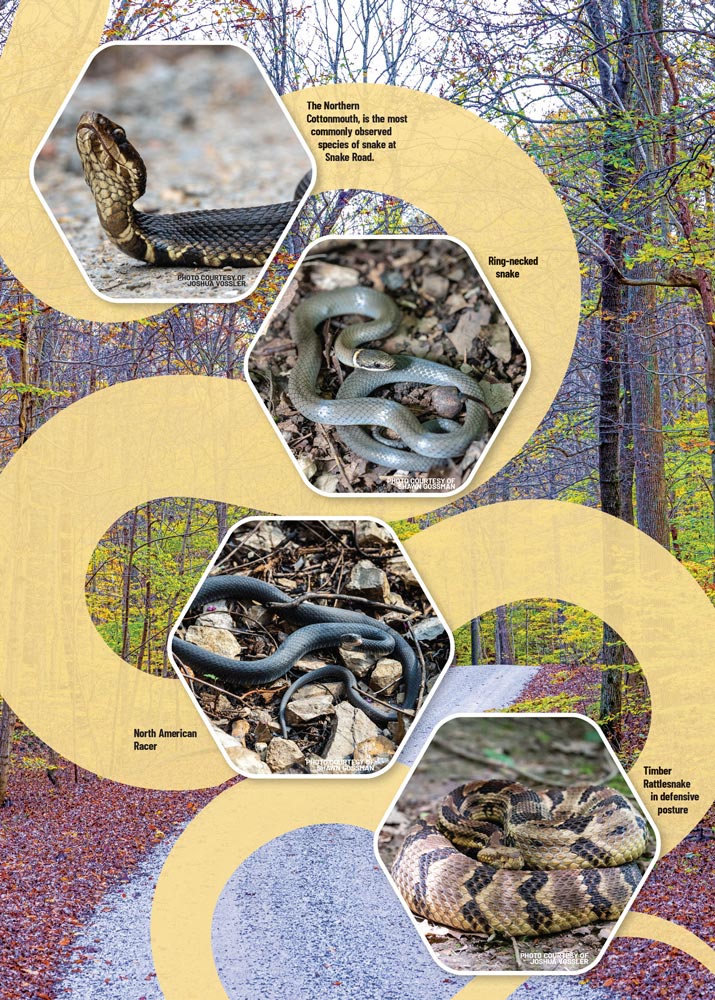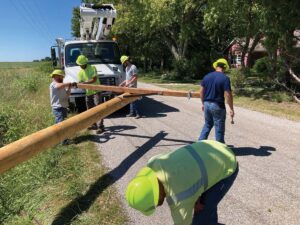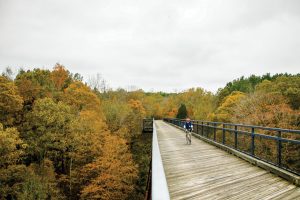Like many other country roads in Illinois, Forest Service Road 345 is a simple gravel lane running north and south, shaded by long-standing timber. While the 2.7-mile-long road, nestled in the LaRue-Pine Hills area of the Shawnee National Forest, might be described as off the beaten path, it is, however, known for its traffic.
Not cars nor trucks; not bicycles, hikers or even horses. Snakes have made Forest Service Road 345, or better known as Snake Road, famous.
Snake traffic on Snake Road is so prevalent that the Forest Service closes the road to vehicles and horses for two months each spring and fall so the reptiles can make their semi-annual trek from one seasonal habitat to another.
“I know of no other place where you can go to such a small geographical location – a 2.7 mile stretch of road – and possibly see 23 species of snakes crossing the road,” explains U.S. Forest Service Wildlife Biologist Mark Vukovich. “I think it’s very unique, not only in the forest service, but maybe in all of North America.”
Scott Ballard says the Union County area, not far from the Mississippi River, is special because it is a place where two distinct territories overlap.
“It is kind of at a crossroads,” Ballard, herpetologist with the Illinois Department of Natural Resources, explains. It lies where a lot of northern species reach the southern edge of their geographic range and where a lot of southern species reach the northern edge of their range. It’s the most diverse herpetological area in the entire state of Illinois and probably the Midwest.
In addition to being an associate professor and academic librarian at Southern Illinois University Carbondale, Joshua Vossler is an amateur herpetologist. He is the author of Snake Road: A Field Guide to the Snakes of LaRue-Pine Hills. He says the geography of the area around Forest Service Road 345 is important as well.
“This stretch of road is really special because it is the intersection point between multiple major habitats,” he explains. “On the east side of the road is the limestone Pine Hills Bluff. On the other side lies LaRue swamp and all this variety of habitats where various species can find great places to live in a very tiny area.”
Why do the snakes cross the road?
First, it’s not just snakes. For a variety of creatures, the road just happens to be in between where they spend their summers and the places they hibernate.
“In the fall, many of the snakes, salamanders, frogs and lizards that live in the area migrate across the road to find safety in the bluffs over winter. In spring, they leave the bluffs to go wherever it is that they will feed and spend the summer,” Ballard says.
So, they cross the road in quantities so numerous they not only can be regularly seen on their journey, but also enough to necessitate closing the road so they can make it across.
“The migration is significant enough that the Forest Service closes the road to everything but foot traffic for two months each spring and fall. Because it’s a road, it’s clear of debris and vegetation and that allows us to see all of these animals going about their lives. It’s arguably the most accessible place to go snake watching in the country and possibly the world,” Ballard adds.
Forest Service regulations require the road be closed March 15 through May 15 and from the beginning of September through October. If snake traffic is heavy, the closure may be extended.
Expectations vs. reality
Those who have never visited Snake Road may envision a long ribbon of snakes, nose to tail, making their way across the road. While that’s unrealistic, odds are visitors will see snakes.
“A lot of people who have come have been disappointed,” Vossler says. “That stems from wildly inappropriate expectations of what Snake Road has to offer. They thought the road would be so covered in snakes that you couldn’t see the gravel … that it was a living carpet of snakes, but that’s just not it.”
Ballard says with a grin, “It’s not like one snake gets down there and sees the road is closed then signals all the others to come on across. It’s not a constant stream.”
That being said, the odds snake watchers will see snakes are high. And likely they’ll see a wide variety of them.
Vossler says on one trip to Snake Road in the fall several years ago, he saw a snake, on average, every couple of minutes during a 6-hour stay.
“I know of people who have seen 200 to 300 snakes in one walk, but it’s not a river of serpents flowing down from the bluff and across the road,” he adds. “Bottom line is that if you go during the migration period and you walk the entire length of the road, you’ll probably see between 12 and 16 different snakes of three or four different species.”
All told, there are more than 20 species of snakes in the area says Shawn Gossman, whose popular “Hiking with Shawn” YouTube channel features nearly 1,000 videos of outdoor excursions in southern Illinois. “That includes three venomous species like the cottonmouth. You’re likely to see more of those than anything else.”
If you go
Ballard explains that visitors to Snake Road should keep to the road itself and its shoulders, avoiding the bluffs and wooded areas. He recommends footwear that covers the ankle as well as blue jeans or other long pants.
“If you were to mistakenly step on a venomous snake, it’s probably going to strike in the ankle. If you’re wearing flip-flops and shorts, it’s going to be a problem.”
He stresses while people are welcome to watch the snakes and photograph them, harassing or collecting them is illegal, adding that authorities will press charges for breaking the law.
“It’s a very fragile ecosystem and everyone must respect the habitat there,” Ballard says.










